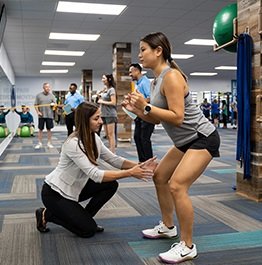
How to Prevent Shoulder Impingement and Pain for Swimmers
April 30, 2015No matter what sport or activity you engage in, there are always risks of injury. The chances of getting hurt or developing a chronic problem are often increased when we don’t know the stretches and tactics to prevent them.
Most people know swimming as a sport that is great for burning calories, helping the spine, and developing muscle. What we often forget is that swimmers are at just as much risk for developing chronic pain as those in other sports. If you are a swimmer, or know a swimmer, these signs of shoulder impingement that could help you prevent further injury and reduce pain! Check it out!
What is Shoulder Impingement?
Shoulder impingement is shoulder pain caused by a tendon (the connecting tissues) rubbing on the shoulder blade, causing pain & difficulty and can lead to a rotator cuff tear.
What Does Shoulder Impingement Look Like?
- Pain on the sides of the upper arm with any overhead activities.
- Can be the result of an injury or repetition of playing several overhead sports.
- A frequent result of shoulder problems in swimmers and others who play overhead sports is a change in posture. Most often, this presents itself in a more forward head and rounded shoulders.
- You may notice a weakening in the soft tissue associated with this posture including restricted pecs (anterior shoulder musculature), lengthened and weak upper back (scapular stabilizers, serratus anterior, rhomboids, middle/low trapezius), weak shoulder joint (glenohumeral posterior capsule) and a weak neck (anterior cervical flexors).
- When looking at the range of motion (ROM) when not playing the sport, there will usually be excessive external rotation (rotational movement away from the sides of the body) and horizontal abduction (lateral movement away from midline of the body) due to hypermobility of the anterior glenohumeral joint capsule (in the shoulder area).
Why Does This Happen?
- In the younger patient (about thirty years old or younger) repetitive overhead activities lead to imbalance of the shoulder capsule with relative tightening and limitation of movement towards the back of the body and relative stretching of the capsular structures in the front of the shoulder.
- Shoulder range of motion in swimmers is similar to that of overhead athletes, with excessive external rotation and limited internal rotation (movement toward the center of the body)
- The loosening of the muscles in the shoulder permits excessive external rotation needed for overhead athletics, but places greater demand and strain on the rotator cuff and the biceps to prevent the movement of the humerus bone in the shoulder area.
How to Fix It:

Pec Stretch on Foam Roll
One method that allows the anterior chest to be stretched without overstressing the anterior capsule is to apply a low load on the anterior aspects of the shoulder using cuff weights while the patient lies supine over a foam roller.

A self-stretch to the posterior capsule can also be applied by lying on the involved side with the shoulder flexed to 90 degrees. The patient applies a self-stretch by applying a downward force to the distal forearm towards the plinth (table).

Scapular Push Up
Lay on your stomach propped up on your elbows. Let your upper back and shoulder blades sag down and come together. Then push through your elbows and round out your upper back as much as you can and hold.

Prone I
Lying face down with your arms by the side of your body, slowly move your arms upward towards the ceiling as you squeeze your shoulder blades towards your spine and downward. Palms should face down.

Prone Y
Lying face down with your arms above your head, slowly move your arms upward towards the ceiling as you squeeze your shoulder blades towards your spine and downward. Thumbs should point toward ceiling.
Print, share or pin this handy guide with a friend or family member!

Reader Interactions
Leave a comment
You must be logged in to post a comment.



